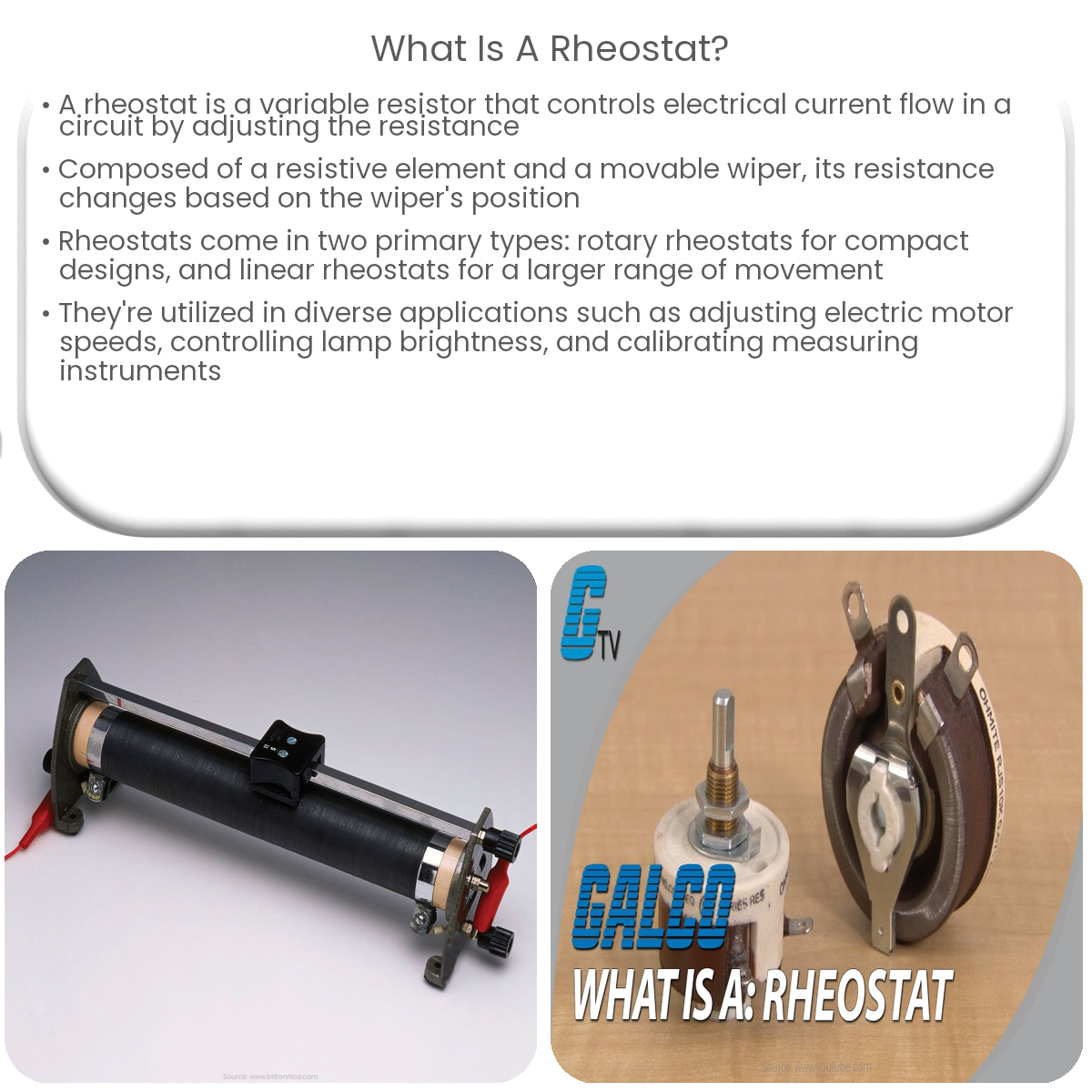A rheostat is a variable resistor used to control electric current flow in a circuit by adjusting resistance, often found in light dimmers or motor speed controllers.
Introduction to Rheostats
A rheostat is a type of variable resistor used to control the flow of electric current in a circuit by adjusting the resistance. This component is commonly used in applications where it’s necessary to change the resistance without interrupting the circuit, such as in dimming lights, controlling motor speeds, and adjusting the volume in audio systems.
Construction and Operation of Rheostats
Rheostats are typically constructed using a resistive wire or a carbon film wrapped around an insulating material, such as ceramic or glass. A movable contact, called a wiper, slides along the resistive element to create a variable resistance between the input and output terminals. As the wiper moves, the resistance changes, resulting in a change in the current flowing through the circuit.
Difference Between Rheostats and Potentiometers
While rheostats and potentiometers are both variable resistors, they have different applications and configurations. Rheostats are designed for high-power applications and have two terminals, whereas potentiometers are used for low-power applications and typically have three terminals. Rheostats are commonly used to control the flow of current, while potentiometers are employed to control voltage by acting as a voltage divider.
Types of Rheostats
- Wire-wound rheostats: These consist of a resistive wire, such as nichrome, wound around an insulating core. Wire-wound rheostats offer high power handling capacity and are suitable for high-current applications.
- Carbon film rheostats: Carbon film rheostats use a thin layer of carbon material as the resistive element. They are generally used for low-power applications, as they have lower power handling capabilities compared to wire-wound rheostats.
- Cermet rheostats: A cermet rheostat is a combination of ceramic and metallic materials. These rheostats have improved temperature stability and better wear resistance, making them suitable for applications requiring precise control.
Applications of Rheostats
- Light dimmer switches
- Motor speed controllers
- Volume control in audio equipment
- Heating element control in ovens and furnaces
- Power supply adjustments in electronic devices
In conclusion, rheostats are essential components in various electronic applications where the control of current flow is required. Understanding the different types and their specific uses can help you select the right rheostat for your project.


